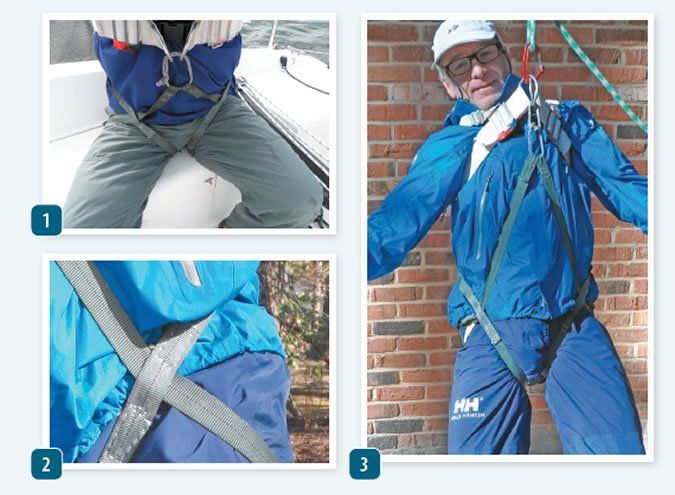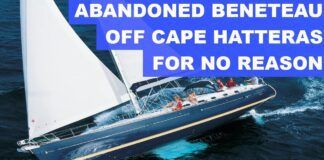Considering the shortcomings of existing leg loops for harnesses, we designed an add-on set of leg loops that can transform any ISO 12401 chest harness into a harness capable of safely distributing the force of an epic fall, without adding significant weight and without inhibiting wearer moment. Below is general guidance on construction, for more details on this project, see the in-depth report “Sailing Harness Leg Loops.”
The force is better transferred to the legs by directing the main support straps directly to the D-ring. By changing the orientation, the weight is also borne by the buttocks instead of the vulnerable inner thigh.
We kept the harness light by using 25 mm webbing for most of the construction, but we increased the width to 70 mm under the thighs for comfort under load. Instead of attaching the loops to the sides of the harness, they are attached front and rear.
Two design features allow the leg loops to be fitted comfortably and still stay in place. First, the crossovers at the hips and upper back can slide and adjust with body movement, preventing the harness from binding and allowing all of the parts to remain in their proper positions through any twist or bend.
When weight is applied, the crossover points on the hips slide, snugging the loops on the thighs only when needed. This self-adjusting cross-over is the key to free movement, comfort, and security in a fall.
Second, there is a simple elastic inverted Y on the back that holds the leg loops up where they belong at all times. There is only one non-textile part, the lone adjusting buckle on the right hip. We did this intentionally, for simplicity, for ease of fitting, and to reduce snagging and scratching potential on deck.
Sizing is not universal, but a line of five sizes – small to extra-large- would suit most sailors. The front closure is a soft shackle. Two soft shackles would increase security.
The loops are removable, the harness does not require any modification, and it should fit any chest harness. Harnesses with a single back strap will require a non-structural loop to stabilize the crossover. The loop securing the elastic to the chest band on this prototype is Velcro, but it could be tied or connected with a small Fastek snap; it is not structural.
The stitching is in accordance with rules published in Is Hand Stitched Webbing Strong Enough?, Practical Sailor Magazine, April 2015. The self-adjusting junctions on the hips were created by adding second layer of webbing and leaving a 1 -inch slot between the two.
1. A view of the front of the harness reveals the sliding crossovers on the hips. These are what allow free movement without binding and ensure that the leg loops to fit comfortably.
2. This is a close-up of the hip crossover section. This is an essential design feature. Without this detail, the leg loops will not work as designed.
3. One significant advantage of our redesigned harness with leg-loops is that they are ready-made for recovering a person in the water using a halyard or block and tackle. We were able to hang for periods of up to 20 minutes without any significant discomfort while wearing the new design.






































